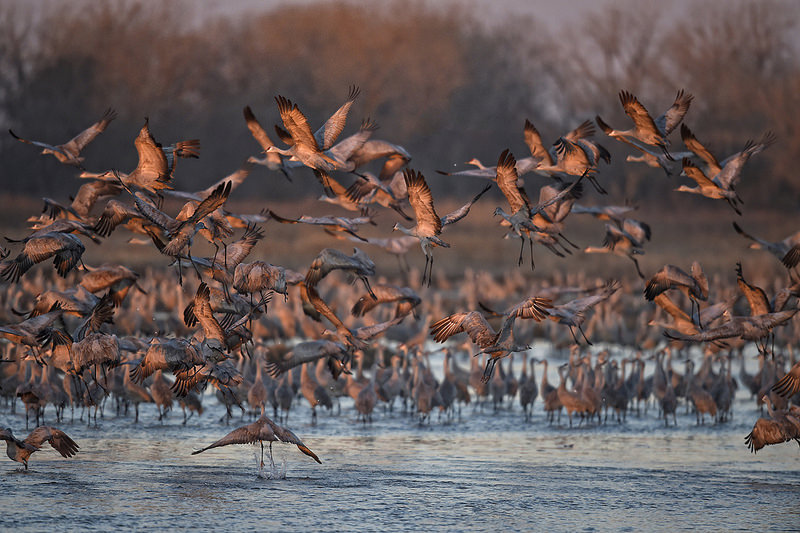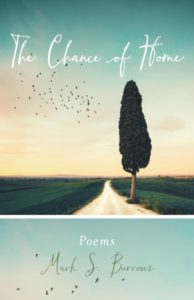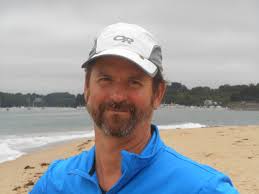
In 2013, my mother moved to a retirement home, leaving the house she had lived in for 58 years. It was a house like they used to build—with windowsills, plaster walls, and overhanging eaves. She cared for that home like you would care for a child, and it was in incredibly good shape when it was sold.
This was the place all three of her sons thought of as “home.” It was more than a physical structure. It was family. It was comedy and drama. It was experiences. It remains memory.
As I read The Chance for Home, the new collection of poetry by Mark Burrows, I was struck with wonder. Flat-out wonder. Burrows writes poetry with a sense of stillness and a sense of silence; it takes both, perhaps, to understand the things that are ultimately important in life and about a life.
And he writes about home, or at least the chance for home. And he has a different understanding of what “home” is.
Here’s a hint, directly from Burrows in his “Afterword: A Brief Biography of This Book.” It’s not the great changes in life that are the important things; it’s what carries us through the changes, “what ever abides,” what he calls the “deeper continuities.” And one of these is the chance for home.
It’s no coincidence that birds can be found as images and metaphors in many of the 86 poems of The Chance for Home. Birds migrate from wintering places to nesting places and back again. Even the birds that don’t migrate have the nesting instinct, one that’s passed along to each new generation. But Burrows doesn’t simply draw allusions to birds (and, by implication, to humans). He paints pictures filled with beautiful and often startling lines.
The Lure of Distances

the broad belt of sky, steering far out
beyond any boundaries we can see.
They heed the lure of distances that
calls them in the caverns of desire,
an instinct shaped beyond what we
can listen for or ever finally hear.
Their habit seeks an end as far as
the heart can reach and farther
than the eye, their hunger drawn
by a longing with unfurled wings
that still somehow still know to fly.
The poems are about places lived, the buildings we think of as homes, streets, and, most of all, experiences. They are reflections of what’s lived in life and what kind of summary a life offers. They move to and from observations from nature to examinations of one’s own experiences. And like the “spring of green clinging improbably to / a dark stone wall,” as he writes in “A Stubborn Parable,” we resist winter’s cold and ice and lift ourselves “up toward the sun against / an unforgiving face of stone.”

Mark Burrows
Burrows is a poet, scholar, and translator, known for his translations of Prayers of a Young Poet by Rainer Maria Rilke (2015); 99 Psalms by Said; and Your Light Gives Us Hope: 24 Daily Practices for Advent by Anselm Grun (2017). He is the co-author (with Jon Sweeney) of Meister Eckhart’s Book of the Heart: Meditations for the Restless Soul (2017); and editor of The Paraclete Poetry Anthology: Selected and New Poems 2005 – 2016 (2017). His poems have been published in Poetry, The Cortland Review, The Southern Quarterly, Metamorphosis,The Dallas Review, and other literary journals. He teaches religion and literature at the Protestant University of Applied Sciences in Bochum, Germany, and is an oblate of Glastonbury Abbey in Hingham, Massachusetts.
To read The Chance for Home is to immerse oneself in the quiet beauty of memory, experience, reflection, and, ultimately, hope.
Related:
Rilke’s Prayers of a Young Poet
The Paraclete Poetry Anthology 2005-2016
Poets and Poems: 99 Psalms by Said
Photo by Diana Robinson, Creative Commons, via Flickr. Post by Glynn Young, author of the novels Dancing Priest, A Light Shining, and the newly published Dancing King, and Poetry at Work.
__________________________

“I require all our incoming poetry students—in the MFA I direct—to buy and read this book.”
—Jeanetta Calhoun Mish
- Longfellow’s “Paul Revere’s Ride”: Creating a National Legend - April 17, 2025
- Poets and Poems: Katie Kalisz and “Flu Season” - April 15, 2025
- Poets and Poems: Michelle Ortega and “When You Ask Me, Why Paris?” - April 10, 2025
Leave a Reply